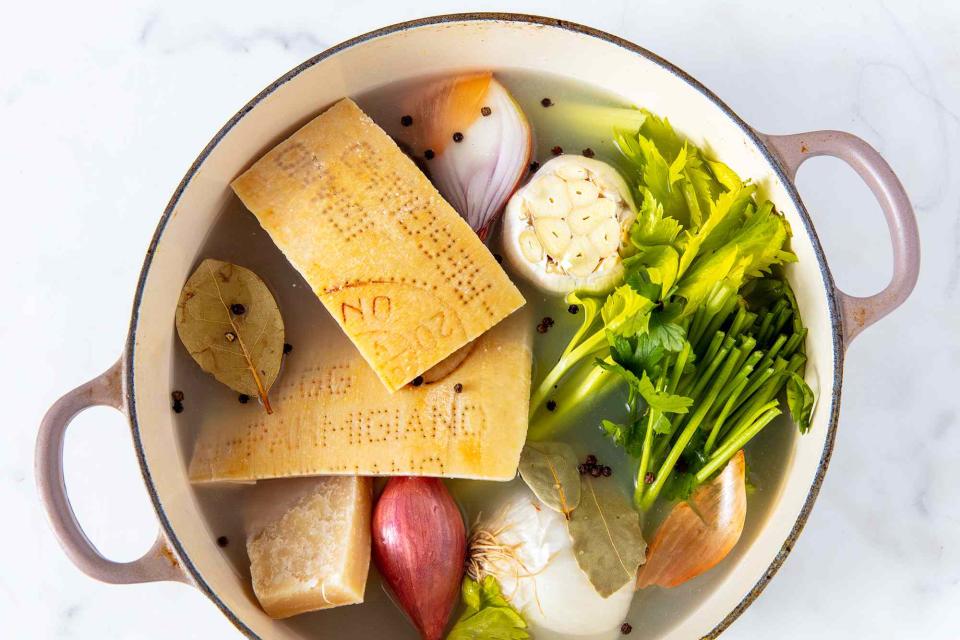How to Use Parmesan Rinds in Soups, Risottos, and More
Parmesan rinds add big flavor with little effort.

Matt Taylor-Gross / Food Styling Ali Domrongchai
So, you’ve slowly whittled down a block of Parmigiano-Reggiano, showering it over bowls of pasta and salads, and now you’re left with the hard, dry outer rind. Don’t throw away this golden, letter-stamped nugget. Parmesan rinds, an often discarded scrap, are a chefs and savvy home cook’s best friend, lending a savory and nutty depth to broths, beans or soups. (And yes, you should be splurging for real deal Parm, easily identified by the pin-dot “Parmigiano-Reggiano” lettering on the rind.)
Related:Parmigiano Reggiano Makers Are Embedding Tiny Trackers in the Rind to Fight Cheese Fraud
Just like the cheese itself, Parmesan rinds are loaded with rich, umami flavor. Unlocking the goodness trapped in these hard and chewy shells is easier than you think. Plus, it gets you more bang for your buck. Real Parmesan cheese isn’t cheap, and it’s typically sold by the pound. (You’re paying for the rind, too, so don’t waste it!) Here are our tips for making the most of your Parmesan rinds.
Are Parmesan rinds edible?
Let’s get this out of the way. Yes, Parmesan rinds are perfectly fine to eat. Unlike many other hard cheeses, Parmesan rinds don’t contain wax or other sealants. They’re formed naturally during the cheesemaking process. In fact, the rind is just dried cheese that slowly hardens on the exterior of the wheel as it ages in temperature- and humidity-controlled rooms. To meet the legal requirements set by the Italian government, Parmigiano-Reggiano must mature for at least 12 months. Most blocks that you find in stores in the US have been aged for 24 to 36 months, which gives them that characteristic nutty flavor and crystalline texture.

 Yahoo Autos
Yahoo Autos 